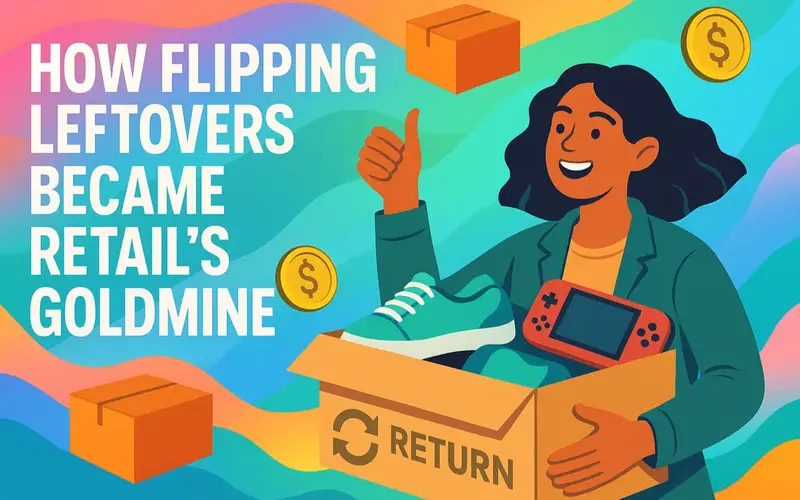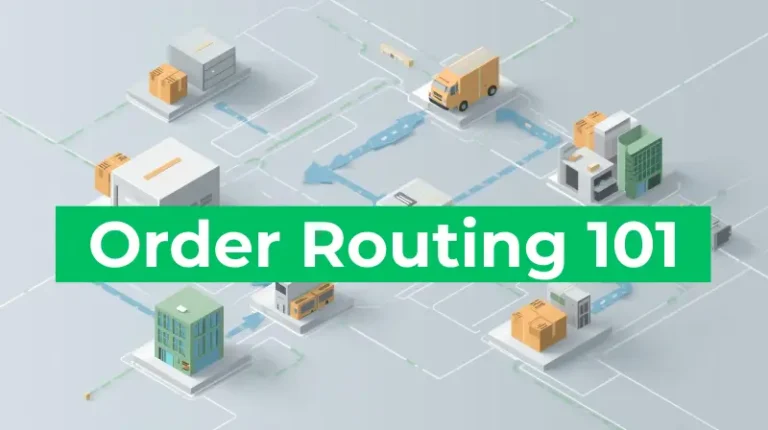How Flipping Returns Became Retail’s Goldmine

Last updated on June 09, 2025

Returns used to be the very definition of sunk cost. Today they’re front-page news. In 2025, record-high tariffs on imports have forced retailers to get creative, and those unwanted boxes piling up in the backroom are suddenly a secret weapon. U.S. retail returns are forecast to exceed $1 trillion in 2025. Combine that with import duties that make overseas stocking extra painful, and you have a powerful incentive: don’t ship returns out of the country, sell them at home. As Robert Johnson of ReturnPro puts it bluntly, a “keep-it” returns policy, where customers get refunded and keep the product, means “there’s no ability to recover that tariff”. In other words, retailers who demand the goods back can actually recoup value (and tariffs) by reselling them.
Tariffs have essentially flipped the script on returns. Instead of quietly liquidating overseas, brands are directing those goods back into local channels. The New York Times reports that as U.S. retailers slash new imports, reverse-logistics outfits are thriving by refurbishing and reselling returned merchandise. Tariffs have “driven up costs on Chinese imports,” so many big chains are reducing or canceling foreign orders, and that’s creating a gap in inventory. Enter companies like ReturnPro: they sweep in to fill the hole with returned and overstock items. One estimate says ReturnPro will sort roughly 67 million returned products this year, especially electronics.
The math is irresistible. New inventory is getting pricier by the month, so resale isn’t just a “nice-to-have” sustainability story, it’s a margin play. Cahoot’s analysis notes that higher tariffs raise the cost of new goods so much that secondhand suddenly looks attractive by comparison. “When prices rise and new inventory becomes more expensive or delayed,” explains Cahoot’s Founder & CEO, Manish Chowdhary, “secondhand offers a faster, cheaper, and more sustainable supply chain.” In practice, this means retailers are turning their returns bin into a new stocking aisle. Instead of dumping returns to liquidators abroad, they scrub, repackage, and reprice them for sale, sometimes on their own sites or via resale marketplaces. (ReturnPro even sells through platforms like VIP Outlet and goWholesale.) The result? Refurbished inventory fills supply gaps and keeps shelves looking full, even as foreign shipments slow down.
Make Returns Profitable, Yes!
Cut shipping and processing costs by 70% with our patented peer-to-peer returns solution. 4x faster than traditional returns.
See How It WorksA collage celebrating Gen Z/Millennial thrift culture underscores the boom in resale. Half of Americans now shop secondhand regularly, and one in four have sold something secondhand in the past few months. The growth is explosive: the U.S. secondhand apparel market jumped 14 % in 2024 alone (5 × faster than fashion overall) and is on track to top $74 billion by 2029. Millennials and Gen Z are leading the charge, not out of thrift-shop desperation, but because buying used is trendy, eco-friendly, and often smarter money. As Cahoot notes, younger buyers view secondhand as a first-stop shop, not a fallback. In short, consumer attitudes have shifted: scoring a vintage find or certified refurbished gadget feels like a win, not a compromise. That cultural tailwind means returns and trade-ins have huge resale value. Brands like Patagonia (Worn Wear), Lululemon (“Like New”), and Athleta Preloved are already turning returned or traded-in gear into fresh inventory.
So what does this mean for the future of ecommerce? In a word: resilience. By “domesticating” the supply chain, recommerce buffers brands against volatility. All those returned products already exist in the U.S., free from shipping delays or new-tariff sticker shock. Cahoot puts it this way: recommerce essentially “domesticates the supply chain” by keeping goods closer to home. In practice, that means when tariffs jack up import costs or delays threaten shelves, companies can say, “Hey, we’ve got a warehouse full of returns ready to go.” Instead of scrambling overseas or hiking prices, they tap the local stash. As one Cahoot report observes, resale platforms are becoming a “decentralized warehouse network”—not just sustainable, but strategic infrastructure.
Of course, flipping returns into revenue isn’t automatic. It takes investment and innovation. Forward-thinking retailers are already building new playbooks: ditching old “keep-it” leniency, tightening return rules, and investing in reverse-logistics tech. For example, some 38 % of executives cite “bracketing” (buying multiples to return extras) as a big headache. To counter that, many are requiring the customer to actually ship back all returns. Yes, it means extra shipping for the retailer, but every returned jacket or gadget that comes back can be inspected, repackaged, and sold as “open box” or on a clearance site instead of being thrown away.
Practical Takeaways for Ecommerce Players
- Reframe returns as inventory. Track your return flow and net recovery rate carefully. Each returned item is a potential sale, or at least a resale. Integrate this into demand forecasting. When tariffs rise, selling a returned snowboard or phone at even 50–70 % of list price is a win that offsets lost imports.
- Adjust return policies and incentives. Encourage returns instead of freebies. Even modest incentives (store credit, discounts) can ensure items come back to you. Some brands have removed 100 % “keep-it” policies to recoup value (and the tariff paid).
- Partner with recommerce specialists. Not every brand needs its own outlet. Resale-as-a-Service (RaaS) providers like ThredUp, Trove, and Recurate can plug in to handle authentication, logistics, and sales of used stock. Heavy hitters like Patagonia and Athleta teamed up with third parties to launch trade-in programs. If you’re smaller, platforms like eBay or other recommerce partnerships can do the trick.
- Go local with logistics. Whenever possible, process returns domestically. Solutions like peer-to-peer reverse logistics or domestic refurbishment mean avoiding import tariffs and carbon guilt. For example, “peer-to-peer returns” programs route a returned item directly from one consumer to the next, skipping extra shipping legs. Likewise, boutique services now exist to pick up returns in-market and list them locally, rather than sending pallets abroad.
- Invest in technology. Use data and AI to grade returns fast. A scratched phone can get a 90 % value bump with a quick refurb. The faster you re-list a return, the less value it loses. Integrate returns into your warehouse management system so excess and returns inventory are immediately flagged as sellable surplus.
Convert Returns Into New Sales and Profits
Our peer-to-peer returns system instantly resells returned items—no warehouse processing, and get paid before you refund.
I'm Interested in Peer-to-Peer ReturnsThe broader lesson is clear: returns aren’t just a headache; they’re a hedge. As Cahoot’s Jeremy Stewart summarizes, recommerce is no fad: “Recommerce is not a disruption, it’s an evolution. The brands that thrive will be those who view returns, resale, and reverse logistics not as cost centers, but as opportunities to connect, conserve, and compete.” In an era of unpredictable trade policy and savvy consumers, recycling returned goods is a win-win: it turns erstwhile losses into profit, keeps customers happy with deals, and even scores points on sustainability.
In short, flips are in. The kids who love thrift shopping aren’t thrift-shaming anymore, they’re influencing the entire supply chain. For ecommerce and retail pros, the message is simple: Embrace the returns bonanza. Whether you’re a giant chain or a niche online seller, every jacket, gadget, or blender that comes back your way is a chance to make money instead of taking a loss. The tariffs have changed the game; it’s time we all played it. So next time a truckload of returns shows up, don’t groan, cheer. Maybe you’re holding the year’s hottest markdown.
Ready to mine your returns for value? Audit your returns strategy today: map your return flows, calculate your net recovery rates, and explore resale partnerships. The closet’s open, let’s make sure we all profit from it.

Turn Returns Into New Revenue


 6 minutes
6 minutes


